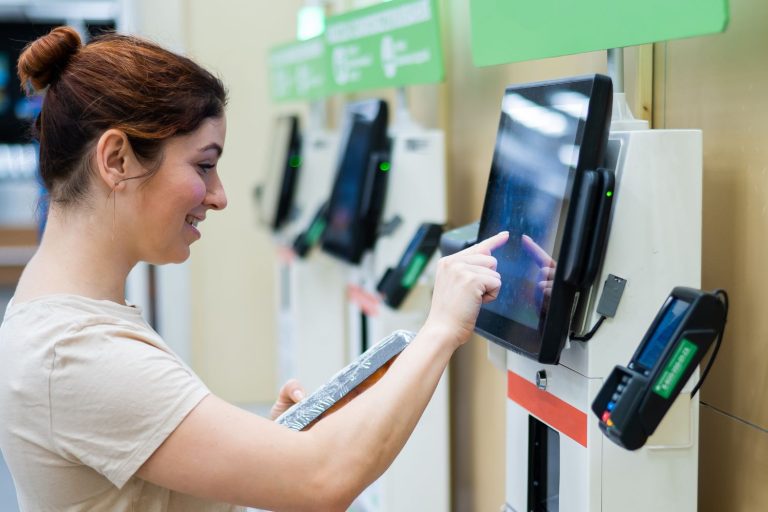Safeguarding Patients: The Role of Digital Tools in Improving Patient Safety
Patient safety is at the heart of healthcare. The principle of “First, do no harm” underscores all decisions healthcare professionals make, but patient harm occurs far too often despite best efforts. In fact, up to 40% of patients worldwide experience harm in outpatient or primary care settings, and a staggering 80% of these issues are preventable.
These problems usually occur due to outdated methods, such as manually transferring patient data, human errors, or delayed communication in emergencies. This shows that improving patient safety isn’t just a goal; it’s a necessity.
So, how do we improve patient safety in today’s fast-paced, complex healthcare environment? One powerful answer is technology. And no, it’s not just about fancy gadgets or cool apps—it’s about using tech to make healthcare safer. One great example is leveraging digital patient intake solutions.
By embracing digital solutions, practices can improve how care is delivered. These tools help reduce errors, speed up communication, and make patient-provider interactions smoother and safer.
Case Studies: Insights from the Institute of Medicine (IOM)
The use of technology to improve patient safety was a concept that originated way back in 1999. The two pivotal reports from the IOM became the precursor of this concept. The 1999 report “To Err is Human” and its follow-up report, “Crossing the Quality Chasm” (2001), highlighted how technology could help reduce medical errors and improve care quality. These reports emphasized the need for healthcare systems to adopt digital solutions to not only improve efficiency but also enhance patient safety.
Today, multiple digital tools are available that can help practices deliver safe and quality care. Let’s take a closer look at how digital solutions can enhance patient safety, particularly with innovations like digital patient intake systems and check-in tools.
How Digital Healthcare Solutions Can Improve Patient Safety?
Patient safety is a non-negotiable priority in healthcare, but digital healthcare solutions can do more than just safeguarding—they can revolutionize how care is delivered. By embracing technology, providers can enhance safety while streamlining and optimizing patient care. Let’s see how:
1. From Manual Errors to Digital Precision: The Power of Digital Intake Systems
Before using digital tools: Traditional paper-based processes are prone to errors. When the front office staff manually enters patient data from paper forms into EHRs, there’s a higher risk of transcription mistakes. These errors can lead to costly consequences like incorrect diagnoses, treatments, or medications, putting patient safety at risk.
After using digital tools: A digital patient intake software eliminates human-prone errors by digitizing the entire process. Once the patients provide their information via digital forms, the data is automatically transferred to the EHR. This ensures that patient data is accurate and up to date, reducing the chances of errors that can compromise patient safety.
2. Protecting Data Privacy: A Big Deal in Healthcare
Before using digital tools: Traditional paper records have a high vulnerability factor. From being misplaced to exposure to unauthorized individuals, it is more challenging to maintain data privacy through paper records.
After using digital tools: With a digital platform, you can restrict the access of patient data to only authorized users. And with a HIPAA-compliant, secure digital platform, you can safeguard data by enforcing standardized security protocols.
3. Better Communication for Better Care: Enhancing Patient-Provider Interactions
Before using digital tools: Effective communication is essential to ensure that everyone is on the same page. However, traditional communication methods—like phone calls, faxes, or even verbal exchanges—are prone to delays and misunderstandings, especially when dealing with complex medical information. These methods are not only slow, but they also leave room for miscommunication or missed messages.
After using digital tools: Digital patient engagement solutions improve communication between patients and your staff by allowing practices to share real-time updates and instant communication. Practices can send out automated appointment and payment reminders. Additionally, communication channels can be used to send out targeted health campaigns, promote new services and vaccination drives, educate about health conditions and flu, and so much more. And the staff can achieve all this by minimizing their administrative burden.
4. Quick and Easy Access to Crucial Patient Data:
Before using digital tools: In traditional healthcare settings, accessing patient information during care transitions or emergencies could be a slow, cumbersome process. Either the patient’s vital medical records are buried in paper files or delayed by fax. Crucial information could be missing or outdated, forcing healthcare professionals to make urgent decisions with incomplete data and risking patient safety.
After adopting digital tools: Digital solutions help in consolidating patient data, making it easily accessible to authorized users. Without the burden of manually entering information, the patient data is automatically recorded and updated in the intake solution and the EHR. And this makes it easy for the staff and providers to instantly access real-time patient data, ensuring faster, accurate decision-making during emergencies. This eliminates delays from paper records, improving patient safety through quick, efficient access to critical information.
5. Minimizing Infection Risks with Touch-Free Intake:
Before using digital tools: In high-risk environments, reducing face-to-face interactions and minimizing the handling of paper forms can help decrease the spread of infections. Crowded rooms and exchanging paper records are a recipe for disaster, particularly in environments where patients have compromised immune systems.
After adopting digital tools: Digital check-in tools, such as kiosks or personal devices, reduce the need for physical interactions and paper handling that protect patients and staff alike from infections.
The Role of Digital Tools in Patient Safety to Forge a Safer Future:
The shift from paper-based processes to digital healthcare solutions is transforming patient safety. Digital tools like patient engagement platforms and intake systems are making care more accurate, timely, and personalized. So, the next time your patient visits your practice, remember that you can leverage technology to keep them safe and make yourself a lifesaver.
The future of healthcare is digital, and with these advancements, the goal of “First, do no harm” becomes more achievable every day.
CheckinAsyst replaces traditional patient intake with a safer, more convenient, and automated digital experience. The platform helps patients check in digitally, securely captures data directly into your EHR, and enhances patient communication through secure messaging—all on one platform. Ready to boost patient safety? Schedule a demo today!







